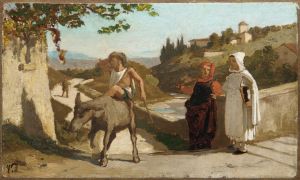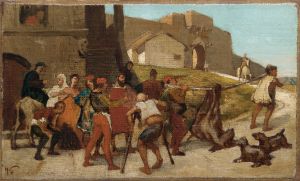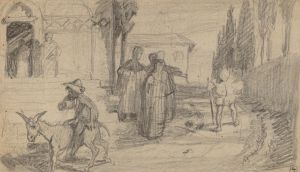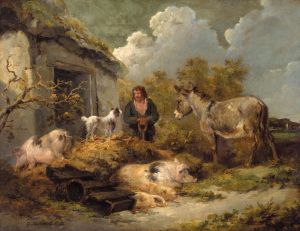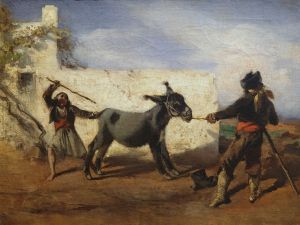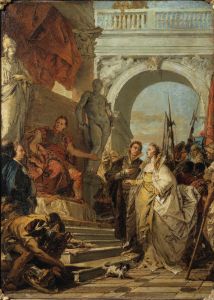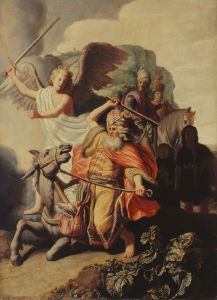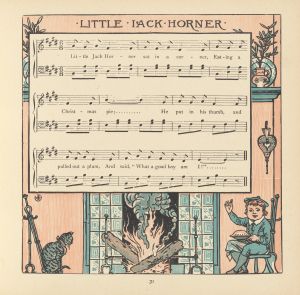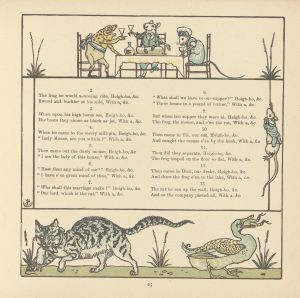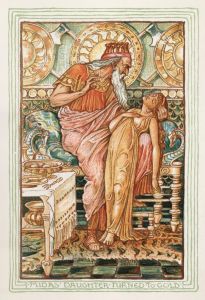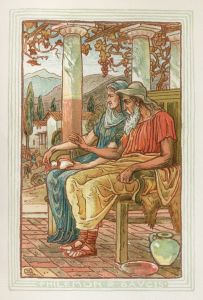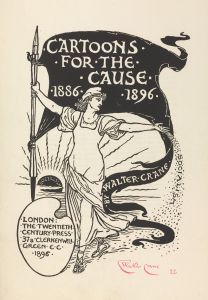
The Ass and the Sick Lion
A hand-painted replica of Walter Crane’s masterpiece The Ass and the Sick Lion, meticulously crafted by professional artists to capture the true essence of the original. Each piece is created with museum-quality canvas and rare mineral pigments, carefully painted by experienced artists with delicate brushstrokes and rich, layered colors to perfectly recreate the texture of the original artwork. Unlike machine-printed reproductions, this hand-painted version brings the painting to life, infused with the artist’s emotions and skill in every stroke. Whether for personal collection or home decoration, it instantly elevates the artistic atmosphere of any space.
Walter Crane was a prominent English artist and book illustrator, known for his contributions to the Arts and Crafts Movement and his innovative work in children's book illustrations. Among his many works, "The Ass and the Sick Lion" stands out as an example of his ability to blend narrative and visual art seamlessly. This piece is part of Crane's series of illustrations for Aesop's Fables, a collection of moral tales that have been retold and illustrated by numerous artists over the centuries.
Walter Crane was born in Liverpool in 1845 and became one of the most influential figures in the decorative arts during the late 19th and early 20th centuries. His work was characterized by a keen attention to detail, vibrant colors, and a strong sense of design, which were hallmarks of the Arts and Crafts Movement. Crane's illustrations often featured intricate patterns and a harmonious balance between text and image, making them highly appealing to both children and adults.
"The Ass and the Sick Lion" is based on one of Aesop's fables, which tells the story of a lion who pretends to be sick in order to lure animals into his den, where he can easily catch and eat them. The ass, however, is cautious and does not fall for the lion's trick, demonstrating the moral lesson of the fable: the importance of being wary of deceit and not falling for appearances.
Crane's illustration of this fable captures the essence of the story through his use of expressive characters and dynamic composition. The lion is depicted with a cunning expression, while the ass appears skeptical and alert, embodying the moral of the tale. Crane's use of color and line work adds depth to the scene, drawing the viewer into the narrative and enhancing the storytelling aspect of the illustration.
Crane's work on Aesop's Fables was part of a broader trend during the Victorian era, where there was a renewed interest in classical literature and moral tales. His illustrations were not only meant to entertain but also to educate, reflecting the values and social norms of the time. Crane's ability to convey complex ideas through simple yet powerful imagery made his work particularly effective in communicating these timeless lessons.
In addition to his work on Aesop's Fables, Walter Crane was involved in various artistic endeavors, including wallpaper design, textile design, and painting. He was a key figure in the Arts and Crafts Movement, which sought to elevate the status of decorative arts and promote craftsmanship in response to the industrialization of production. Crane's commitment to artistic integrity and his belief in the social role of art were evident in all his works, including his illustrations for children's literature.
Overall, "The Ass and the Sick Lion" exemplifies Walter Crane's mastery of illustration and his ability to bring stories to life through his art. His work continues to be celebrated for its beauty, creativity, and enduring appeal, making him a significant figure in the history of illustration and the Arts and Crafts Movement.





